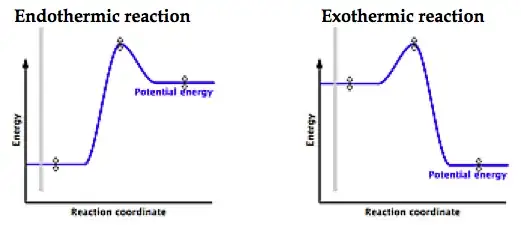As anglinb pointed out, the only completely reliable method of determining whether the reactions are endo- or exothermic is by calculation. That said, certain generalizations may allow reasonable predictions about changes in thermodynamic parameters to be made:
- Reactions that produce a net increase in $\sigma$-bonds between particular pairs of atoms that were $\pi$-bonded in the reactants tend to be exothermic, since $\sigma$-bonds tend to be more stable than $\pi$-bonds. Conversely, reactions in which the generation of $\pi$-bonds and reduction in number of equivalent $\sigma$-bonds occurs tend to be endothermic.
- Reactions that involve a net reduction in the total number of molecules of products as compared to reactants, and/or involve the generation of products in more highly ordered states (for example, the generation of solids from liquids or gases), tend to occur with a reduction in entropy. Reactions that involve the generation of heteroatomic compounds from homoatomic substances tend to increase entropy. The spontaneity of a reaction is governed by the equation $\Delta G = \Delta H - T\Delta S$, where $\Delta G < 0$ for a spontaneous process. Therefore, if a reaction occurs spontaneously while the entropy change ($\Delta S$) is negative, the reaction must be exothermic by default; an endothermic process with negative entropy change cannot be spontaneous.
Remember that these are very rough guidelines, and ultimately only performing calculations with concrete values for the relevant thermodynamic parameters can be totally definitive. The first and third reactions from your question can be predicted to have negative $\Delta S$ by the above guidelines, and therefore must be exothermic (if they're supposed to be spontaneous at all). Crunching the numbers using thermodynamic data does in fact confirm that.
